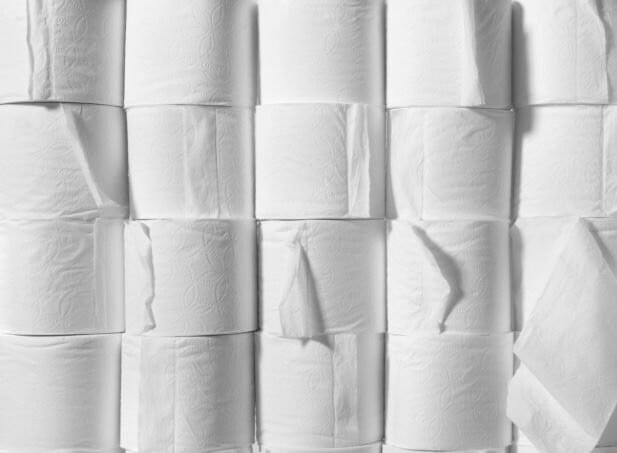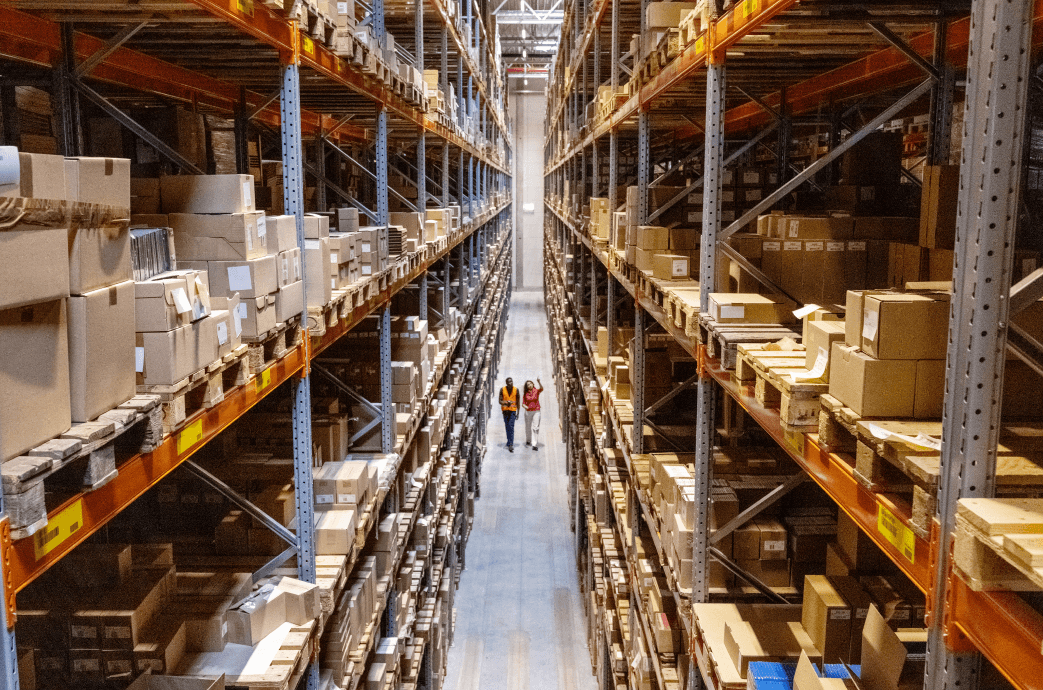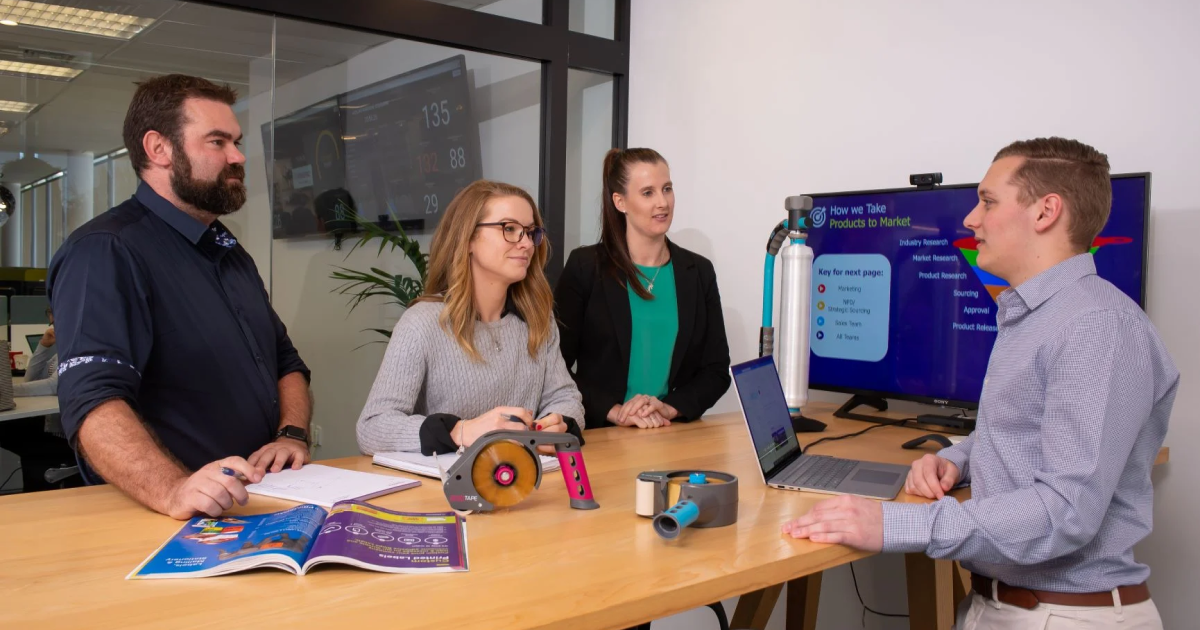%20(1).jpg?width=555&height=370&name=DSC_7836%20(1)%20(1).jpg)
Pallet wrap is essential at ensuring protection during transit, but the question is – how do you choose the right one?
In this article, we will guide you through the process of selecting the ideal pallet wrap for your business.
Factors to consider when choosing pallet wrap
Using inadequate or inappropriate wrap may result in product damage during transit, leading to potential financial losses. Additionally, poor wrapping can cause instability, increasing the risk of pallets toppling over and damaging other goods or causing workplace accidents. To ensure you select the most appropriate option, consider the following factors:
Load type and size
The first step in selecting the right pallet wrap is assessing the weight, shape, and dimensions of your products. Heavy loads may require a high-strength wrap, while irregularly shaped items might benefit from flexibility or specialist wraps.
Environmental conditions
Always factor in the environment in which your pallets will be stored or transported. If your goods are exposed to certain conditions, opt for a wrap with UV resistance, moisture resistance, or temperature stability. This ensures the wrap maintains its integrity and protects your products effectively.
Film thickness
Pallet wrap thickness is measured in microns and ranges in thickness from 5 to 30mu, depending on your application. For example, you'll want to use thicker film for heavy or irregular loads, or loads that might be more prone to puncture and scratching during transport.
Thicker films offer increased load stability and protection against punctures, but they may require more material, which adds to the cost. To help you find the right wrap for your line of work, we can conduct a pallet wrap analysis and recommend the most suitable product.
Dimensions
The standard width of pallet wrap is typically between 380mm and 510mm, or 15 to 20 inches. Wider films generally cost more per roll. In terms of length, longer rolls generally cost more. However, shorter rolls need to be replaced more frequently, potentially impacting the efficiency of your warehouse operations.
Material
Pallet wrap is typically made of polyethylene, polypropylene, or PVC. The majority of our pallet wraps are made from polyethylene because it is stretchable and wound on a cardboard core.
Stretch
Stretch wrap provides a secure and tight grip around the pallet by combining tension and elasticity. High stretchability enables better load containment, reducing the risk of shifting and damage during transit. Consider the stretch percentage and elongation properties of the wrap to ensure it suits your load requirements.
Containment force
Pallet wrap containment force is the pressure the wrap subjects the contained objects to. This is what holds the items together and stops them from shifting during transportation. If you apply too much containment force, you're wasting pallet wrap and you could damage the goods within.
If you don’t use enough containment force, you run the risk of goods falling out or becoming unstable, resulting in lost stock and ancillary damage to transporters or people.
Application method
Hand pallet wrap is manually applied and is generally used for lighter work with a lower volume of pallets per day. You can use these wraps in conjunction with wrap dispensers and Grip Systems for an ergonomic application process.
Machine pallet wrap is most suited to high-volume users that are dispatching over 15 pallets a day. It also helps to reduce plastic consumption and therefore lowers costs.
Another key consideration is determining whether you will be applying the pallet wrap manually or with a wrapping machine. Machine wraps are designed for automated systems and offer consistent tension and application speed. On the other hand, hand wraps can be more versatile and suitable for smaller-scale operations or irregularly shaped pallets.
Cast and blown pallet wrap
Pallet wrap is made in two different ways – cast or blown. Cast film is made when the resin is pressed through chilled rollers to be flattened. Most stretch film is created using this method.
Blown film is created by making a thick layer of resin and then blowing air within to create a bubble. The size of the bubble and the original film dictates the thickness of the film. The bubble enables the material to cool steadily and is then collected by rollers.
Colour
The colour of your pallet wrap can make it easier for staff to identify pallets and reduce warehouse errors. For extra security, opt for black pallet wrap to keep valuable items hidden from view.
Pallet wrap accessories
As well as the wrap itself, there are a few other products to consider investing in. Firstly, you may wish to protect your products from the elements and the rough surface of the pallet by laying down a pallet pad. Additionally, pallet tops are ideal for protecting the top of your load.
If your load is fragile or you simply want to soften any movements, you can use pallet cushions underneath each corner. For pallets that are double or triple-stacked, corner protection goes a long way. Edge boards help to stabilise loads and strapping, reducing movement and damage during transit.
How to wrap a pallet
We have created a guide outlining all the necessary steps on the proper pallet wrapping technique, ensuring your pallets are wrapped efficiently and securely.
Step 1: Gather the necessary materials
- Pallet wrap: Choose a pallet wrap suitable for your pallet's size, weight and the materials it is holding.
- Pallet: Ensure the pallet is sturdy and in good condition.
- Pallet jack or forklift: Use the appropriate equipment to move and position the pallet in the correct place.
Step 2: Prepare the pallet
- Ensure the load is properly stacked and stable on the pallet.
- Check for any loose or overhanging items that could cause instability or interfere with the wrapping process.
- If necessary, use corner protectors to prevent the film from tearing against sharp edges.
Step 3: Start the wrapping process
Manual Method
Start the wrapping process by holding the loose end of the stretch film against the bottom of the pallet. Walk around the pallet while unwinding the film, keeping it taut. Continue wrapping upward with overlapping layers, paying attention to corners and edges.
Pallet Wrap Machine Method
Insert the loose end of the stretch film into the machine's film holder or dispenser. Activate the machine and adjust the settings for tension, rotation speed, and the number of wraps desired. The machine will automatically wrap the stretch film tightly around the pallet, starting from the bottom and moving upward. Monitor the wrapping process to ensure an even and secure application.
For both methods, pay extra attention to corners and edges, reinforcing them with additional film layers if needed. Maintain consistent tension and overlap each layer as you continue wrapping upward.
Step 4: Apply the first layer of film
As you walk, make sure the film is pulled tightly around the pallet.
Wrap the film around the base of the pallet, overlapping the bottom layers by a few inches. Continue wrapping upward, ensuring each layer slightly overlaps the previous one.
Step 5: Wrap the corners and edges
- When reaching the corners, use additional layers of film to reinforce them.
- Pull the film diagonally across the corner, creating a 45-degree angle, and continue wrapping to secure it.
- Repeat this process for all corners and edges of the pallet.
- If you’re using a machine to wrap the pallet, this step will be done for you.
Step 6: Continue wrapping upward
- After wrapping the corners, continue moving upward while keeping the film taut.
- Aim for consistent tension throughout the wrapping process, avoiding excessive slack or overstretching.
- Maintain a slight overlap between each layer to provide strength and
stability. - If you’re wrapping the pallet by machine this will be done for you.
Step 7: Ensure load integrity
- Pay attention to any loose or protruding items during the wrapping process.
- Use additional layers of film or banding if necessary to secure irregularly shaped or fragile items.
- Check for any gaps or weak points and reinforce them with extra film layers.
Step 8: Complete the wrapping process
- Once you reach the top of the pallet, tear the film and ensure the end is securely tucked under a previous layer.
- Use a film cutter or knife to cut the film, leaving a small tail for easy unwrapping later if needed.
- Apply pressure to the film to ensure it adheres to the load.
Step 9: Inspect and label
- Inspect the wrapped pallet for any potential weaknesses or areas that need reinforcement.
- Attach any necessary labels or documentation to the pallet for identification and tracking purposes.
By following these steps, you can wrap your pallets efficiently and securely, minimising the risk of damage or shifting during transportation or storage. If using a pallet wrap machine, deactivate it once wrapping is complete.
Pallet wrap NZ
Every load has unique dimensions and requirements which is where our team can help. We have a wide range of pallet wraps and accessories and can help you select the most appropriate products for your operations. Contact us today or browse the full pallet wrap range:







.png)

